
By Alex Parker
Arachnophobia Direct, The Black Spider, Mt. Hood. 2nd Ascent.
My buddy Tim Bemrich and I were debating objectives one winter weekend. Portland had been in a serious cold spell and many climbers were taking advantage of a freshly frozen over Columbia River Gorge scene. We debated joining in the Gorge fun, but we both had slightly bigger ambitions for this weather window. It seemed like a great, and somewhat rare, opportunity to finally check out the mysterious Black Spider Headwall on Mt. Hood.
I picked Tim up in Portland at about 1:15am and we were suited up and skinning by about 3:15. We had decided to take the low way around the White River based on the approach notes we’d seen in Bill Mullee’s Mt. Hood Climber’s Guide book. Once we reached the Silcox hut, we veered off and then almost immediately after leaving the groomed snow of the magic mile, we were forced to ditch the skis and transition to crampons due to very icy conditions. The skis would be shouldered the rest of the day until the descent, bummer. Having neither of us done this before, we weren't exactly sure where we were going. Basically, we just wandered in the general direction we knew to be across. Up and down and up and down we went, picking our way slowly across the White River. It certainly wasn’t the best or most efficient crossing (we would come to find out we were way off the normal route), but we eventually made it and continued our slog up toward the Wy’East and base of the Steel Cliffs. Despite the slow approach, we found ourselves at the base of the large snowfield below the Black Spider Headwall when the alpenglow hit. It was time to rope up. At this moment, Tim realized his bladder water bottle had popped and his harness and other gear was frozen solid. A good start to the day so far and not the last of the hiccups. I drank water and ate a little food as Tim beat the frozen block of harness with one of his tools which would eventually yield a wearable harness. We started up the snow field. This proved to be exhausting work, but thankfully Tim was in better shape than I and laid down the majority of the trench up to the base of the wall. The aspect of the mountain had changed and instead of the solid ice conditions on the South face we now found a painstaking mix of breakable crust and unconsolidated snow. Tim marched on like a champ. By the time we had reached the upper bergschrund, neither of us wanted to venture all the way to the far side to pass it, despite this being the supposedly easier crossing. So straight up we went. A few more steps and Tim called out and I could hear slight panic in his voice. He had punched through and was halfway in the ‘schrund. I took a few steps back to take the slack out of the rope and let him know I “had” him. Eventually he struggled his way out and over and I followed. Tim was gassed after a serious effort and it was my turn to break trail. I dealt with similar conditions, but soon found slightly better cramponing, lucky me. I continued to the rock toe marking the base of Arachnophobia. We had figured that getting up to the base of the wall added about 1.5-2 hours of serious wallowing to our approach.
Originally we had planned on climbing the Center Drip. This seemed to be the more reasonable first climb on the Spider. From our approach angle, it was hard to tell if it looked "in," not to mention neither of us wanted to keep moving in these snow conditions to find out. We looked at where we were exactly and decided the only reasonable move was to climb Arachnophobia. We knew little about the route other than it was a step-up in terms of technical difficulty and that it involved more mixed climbing. We had a topo photo of the wall with the route on it from the book and that was it. The rack and rope we brought would have to do. We had planned to simulclimb the majority of the Center Drip on a skinny 40m line. In addition to the rope, we had 6 screws, a few baby angles and knifeblades, and a small rack of nuts and cams. Despite the route change, the plan remained the same, Tim would lead and I would follow until he was basically out of gear and could stop to belay. Tim racked up and despite the bitter cold forecast, it was getting quite warm. One of the main reasons that finding this face “in” is so difficult is due to the aspect and shape of the face - catching early sun and concentrating it in the amphitheatre creating warm, unstable conditions. The approach having taken much longer than anticipated, we found ourselves on the headwall with direct sun and no wind. Time to go!

Tim led the initial climbing, placing a quick screw, and before I knew it he was out of sight. The constant barrage of ice and snow signaled that he was making progress. Head buried and slowly paying out rope, I heard the sound of metal bouncing off rock and ice and looked up to see a couple screws go whizzing by, landing on the snow field below and far out of reach. Another bummer, forced runouts. Eventually the rope ran out, I pulled some of our remaining screws from the anchor and headed up. I found amazing ice, if not a little thin and patchy, basically the whole way. There was a good amount of rock exposed as well and the added bit of mixed made for very enjoyable climbing. I could tell the lower face was warming. Some of the tool placements felt soft and some of the ice was beginning to detach from the rock. Luckily, it must have been cold enough higher on the route because we experienced very little rock fall. Tim led impressively, placing very little gear (now more out of necessity) and pushed the rope up quickly. I popped over the last of the steep mixed climbing on the lower face all smiles. We were up on the 1st snowfield and had climbed a few hundred feet up the route in a single lead.


A single 13cm screw in great ice formed Tim’s anchor. He had positioned it in a shadowed gully and without the sun the bitter cold had come back. Consulting our topo, the line looked as though it moved out right over mixed ground. However, looking straight up from the snowfield, we saw great looking ice directly above. We made the quick decision to climb the new ground and try to straighten out the line to the 2nd snowfield. I took the remaining rack and headed up. I placed a screw early leaving just two left. The climbing was actually thinner, steeper, and a bit more precarious than it looked from below, but the ice was solid and the cruxy section was fairly short. This went somewhere around the WI3 or 3+ mark. Above the ice, I moved up a small snow patch to a choke of rock that would force some rock climbing in an open dihedral. I had only 1 screw, some iron, and rock gear left. I pounded in a baby knifeblade that looked and sounded great. This would turn out to be my only protection for the mixed climbing that would follow, roughly 50ft above my last ice screw. The climbing turned out to be a little heady due to the insecure nature of the crumbly rock, but the moves were pretty moderate and soon enough I gained the snow again and hunted for an anchor. I placed the single screw I had left in good ice, put Tim on belay, and yelled to him not to fall.

When Tim arrived at the belay, he told me my “bomber” pin came out with one whack when the rock exploded around the pin (ugh, scary). We consulted about our options and again we varied from the line as we understood it. Too tired and lazy to pull out the topo, we both remembered there being a right hand exit that took us to the summit snowfield. Instead, we opted to follow the 2nd snowfield up and climbed low angle but sustained, calf-burning alpine ice to what looked like an obvious exit. This ended up being the finish to the Elder/Russell route. From here we were gassed and slowly plodded up the final snowfield to the blustery and frigid summit. We were worked and fully psyched! We had climbed the Black Spider! The day had been a much more involved and exhausting day than we had planned for, but a success. The descent was uneventful, minus the truly horrendous skiing conditions. The frozen chicken-heads had not gone away. We chattered our way all the way back to the lodge with exhausted legs, fully in type 2 fun mode, but proud of what we had done. Mt. Hood had served up exactly what we were looking for, a wild experience. Unknowingly, we would later discover we had done only the second ascent of the route, adding in a new direct variation.


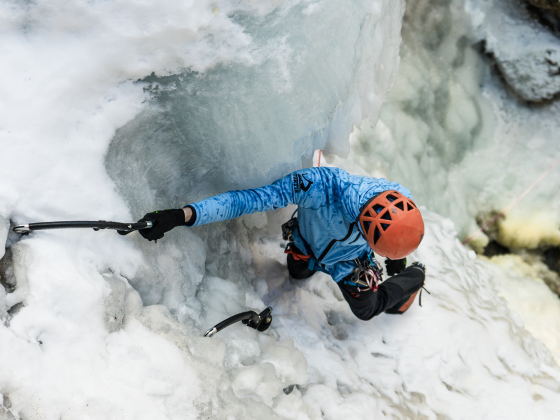

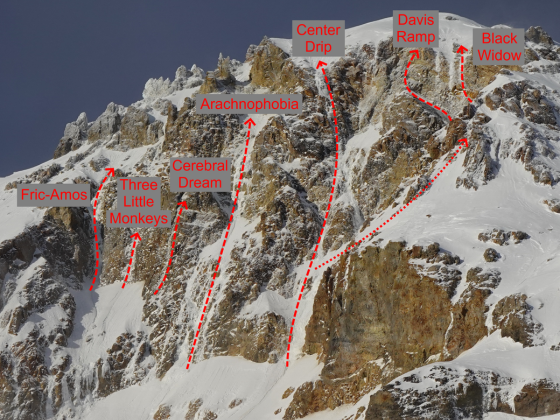
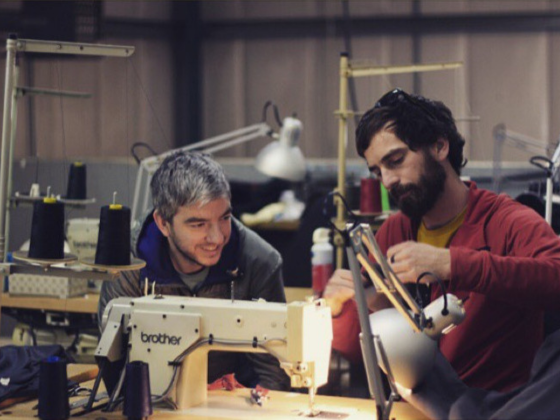
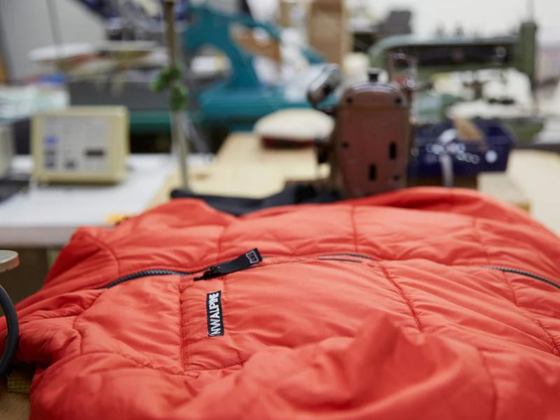
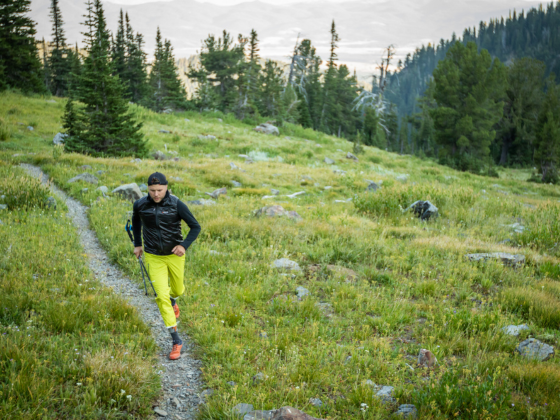

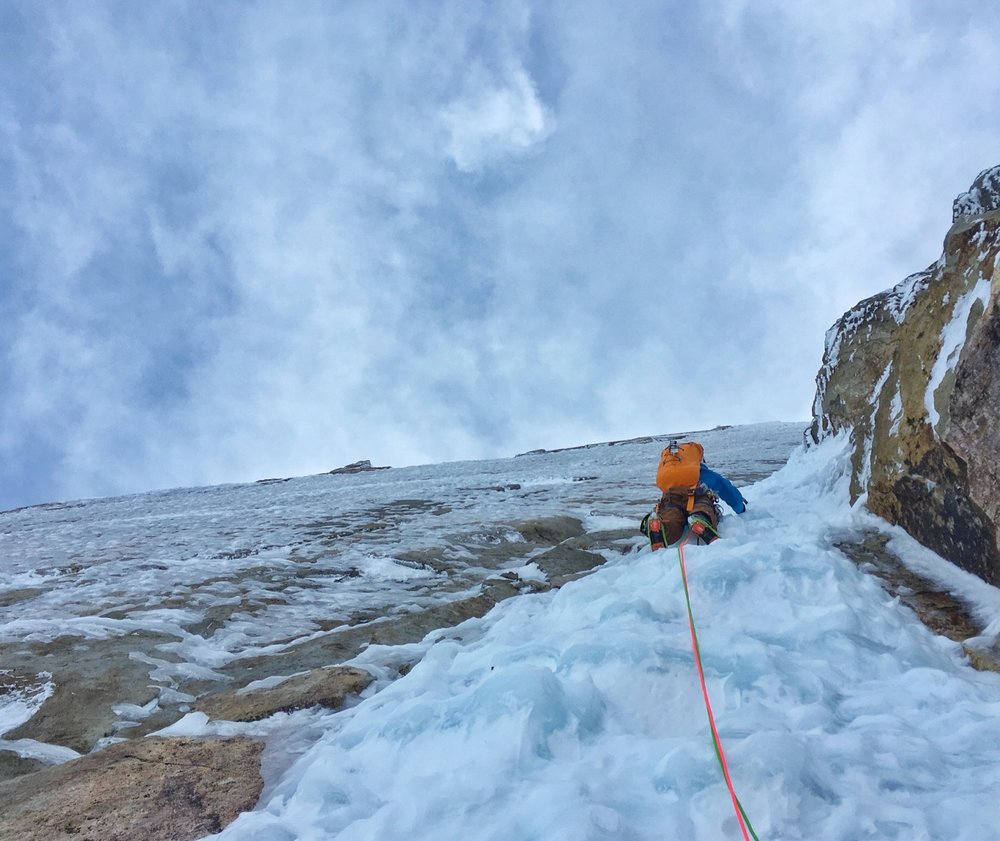
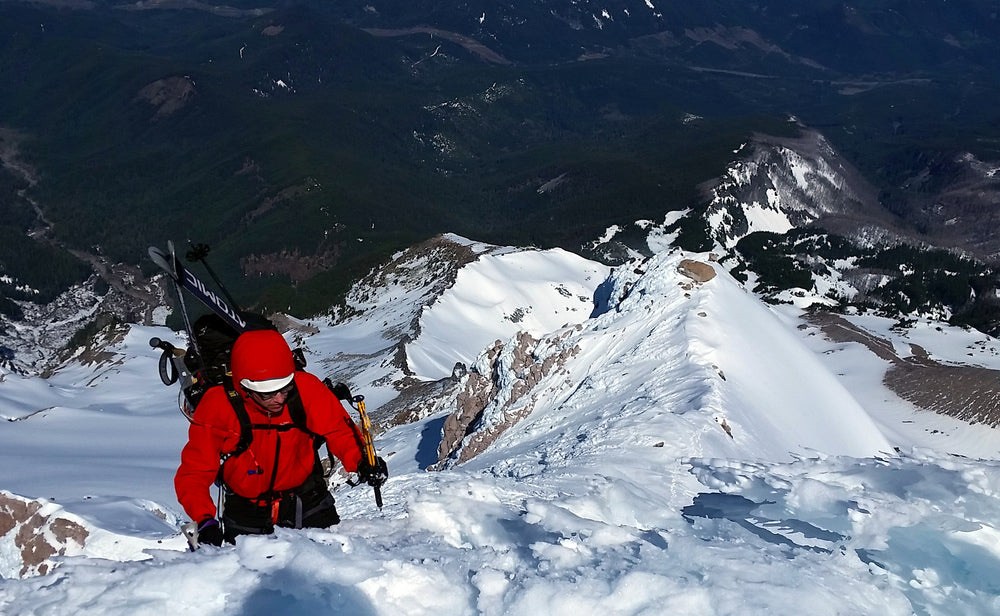
1 comment
Jeff Williams
Fantastic account! And skis on your backs and pro running out. Unbelievably manly. And in great style as well!
Fantastic account! And skis on your backs and pro running out. Unbelievably manly. And in great style as well!